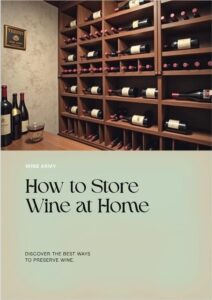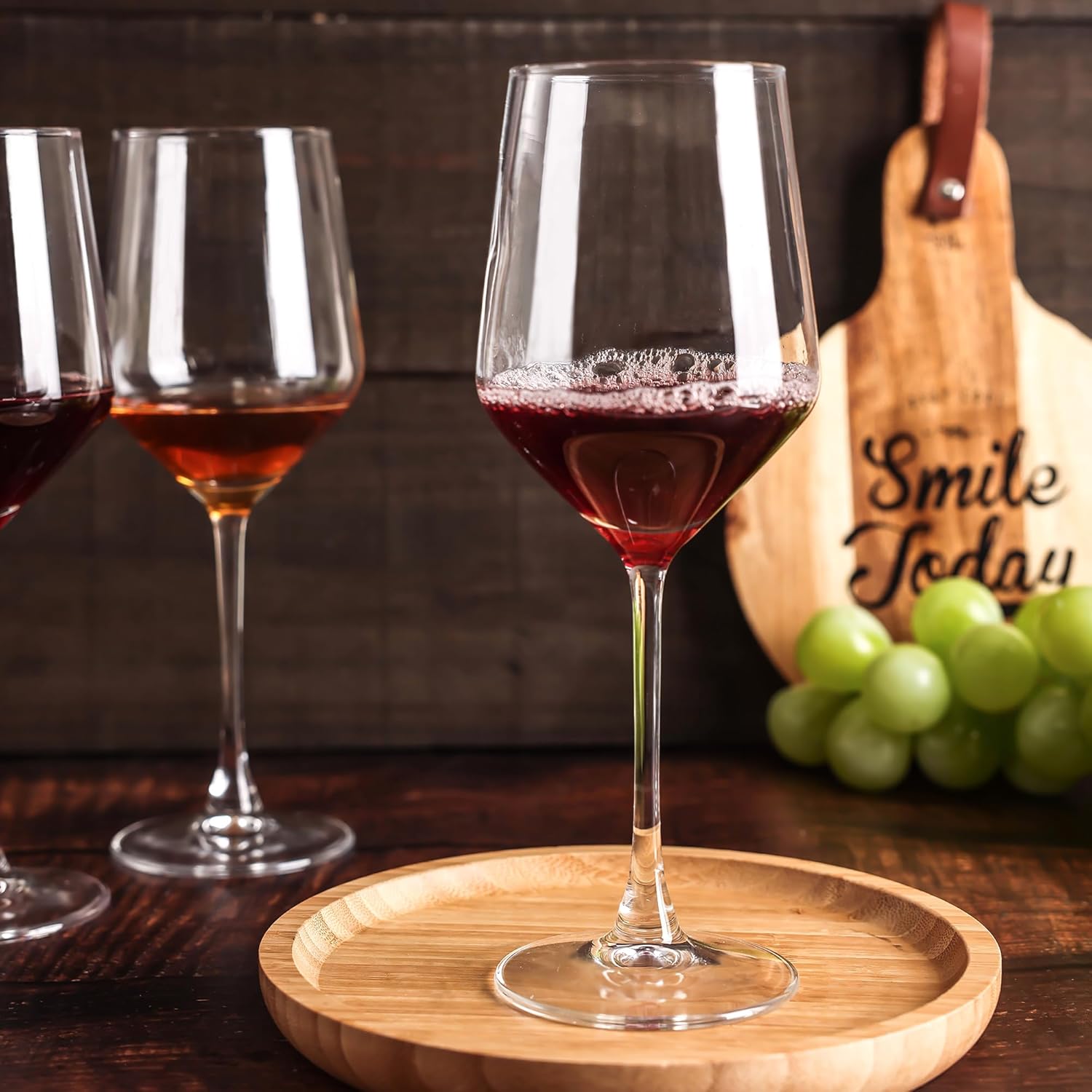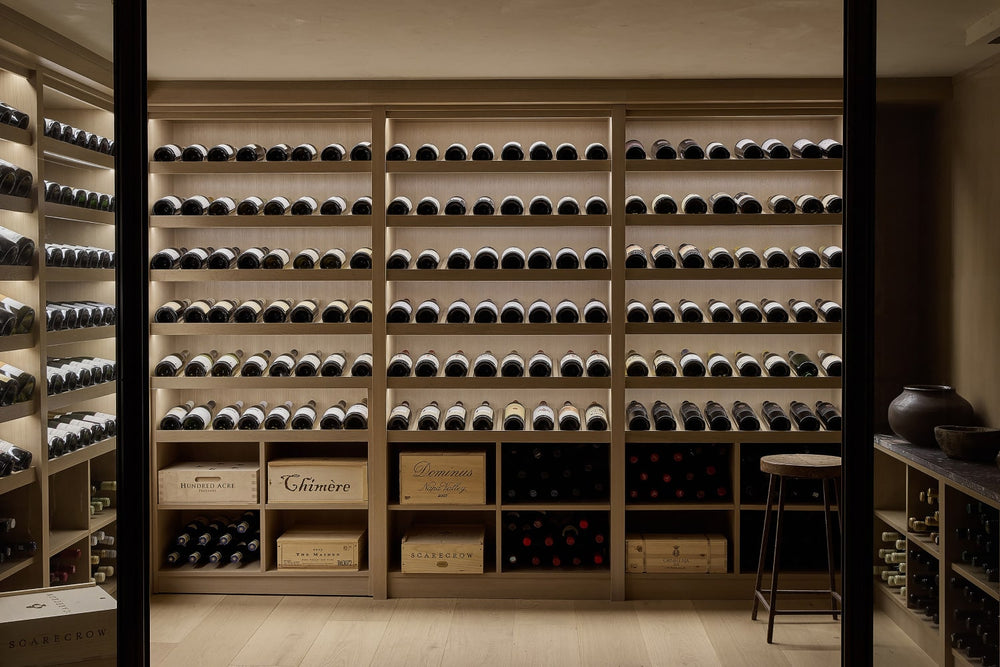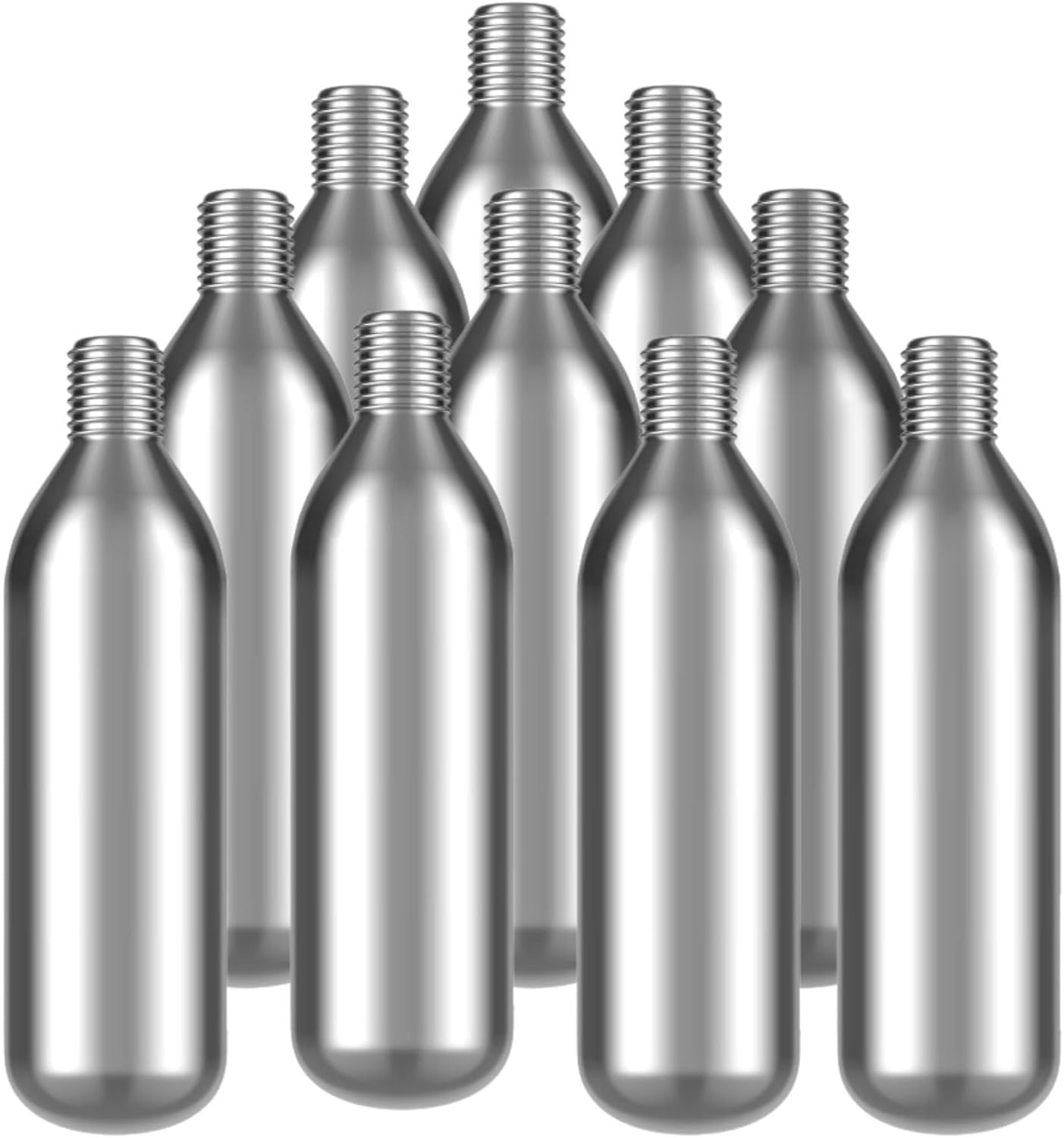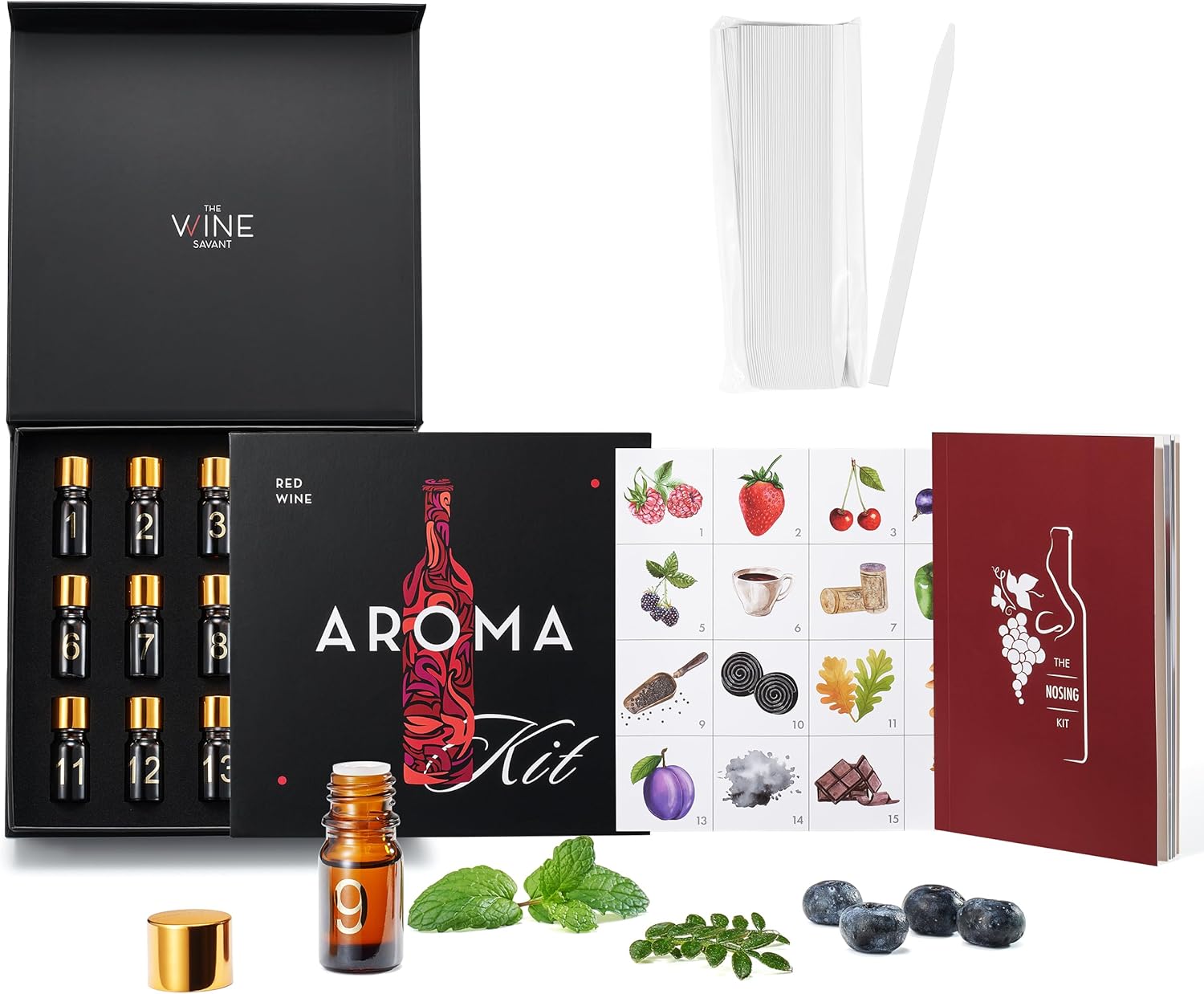How to Store Wine at Home: The Definitive 2025 Guide for Collectors
I’ll never forget the feeling. It was a special anniversary, and I had been saving a bottle of 2010 Barolo for five years. I’d kept it in a decorative rack in my kitchen, thinking it looked beautiful and sophisticated. When the moment came, I opened it with great anticipation, only to be met with a dull, lifeless aroma and a flat, cooked taste. The wine was ruined. That expensive, heartbreaking lesson was the beginning of my obsession with proper wine storage.
As a certified sommelier and a collector who has built a cellar from the ground up, I’ve learned that storing wine isn’t an esoteric art form reserved for the wealthy. It’s a practical science that anyone can master. This guide is the culmination of years of research, hands-on experience, and yes, a few costly mistakes. My goal is to demystify the process and provide you with actionable, real-world solutions—from storing a single bottle to building a serious collection—so you never have to experience the disappointment of a spoiled wine.
The Quick Answer: The 5 Golden Rules
In a hurry? Here’s what you need to know. To store wine properly, you must protect it from its five enemies. Aim for a storage location that is:
- Cool: A consistent temperature between 45-65°F (7-18°C), with 55°F (13°C) being the ideal sweet spot.
- Dark: Away from all direct sunlight and UV radiation.
- Still: Free from vibrations from appliances or heavy foot traffic.
- Humid: Ideally around 70% humidity to keep corks from drying out.
- Sideways: Bottles with corks should be stored on their side to keep the cork moist.
Why This Guide is Trustworthy
In a sea of online advice, trust is paramount. This guide is built on a foundation of Google’s EEAT principles:
- Experience: Every recommendation comes from my personal journey as a wine professional and home collector, managing everything from a few bottles in a tiny apartment to a dedicated cellar.
- Expertise: My formal sommelier training provides a deep understanding of the science behind wine aging and spoilage.
- Authoritativeness: This guide synthesizes information from leading viticulture studies, conversations with winemakers, and industry best practices. We link to other expert resources, like our guide to the best wine glasses for red wine, to create a comprehensive knowledge hub.
- Trustworthiness: All product recommendations are based on independent research and hands-on use where possible. The affiliate disclosure below is a commitment to transparency.
The 5 Enemies of Wine: A Deep Dive into the Science of Storage
To truly understand how to store wine, you need to understand what you’re fighting against. Wine is a living, breathing thing, full of complex organic compounds. Its evolution in the bottle is a slow, delicate dance of chemical reactions. The goal of storage is to allow this dance to happen gracefully, not to have it turn into a chaotic mosh pit. Let’s meet the five villains trying to crash the party.
1. Heat: The #1 Wine Killer
Heat is, without a doubt, the fastest and most destructive enemy of wine. Think of temperature as the rate at which your wine ages. The ideal 55°F (13°C) is like a slow, leisurely stroll. Storing wine at room temperature (around 70-72°F / 21-22°C) is like a steady jog; the wine will age two to four times faster, and not in a good way. The delicate fruit and floral notes will burn off, leaving behind flat, stewed flavors.
Anything above 80°F (27°C) is the danger zone. This is like a full-on sprint towards destruction. The wine literally begins to cook. The liquid expands, which can push the cork out, break the seal, and lead to rapid oxidation. You might notice sticky residue around the capsule—a tell-tale sign of a cooked wine. Consistency is just as important as the temperature itself. Wild temperature swings cause the wine to constantly expand and contract, which can also compromise the cork’s seal. A basement that stays between 60-65°F year-round is far superior to a closet that swings from 65°F in winter to 80°F in summer.
2. Light: The Invisible Threat
Sunlight, and even harsh fluorescent light, contains UV rays that are incredibly damaging to wine. UV radiation can penetrate the bottle (even dark green glass offers only partial protection) and excite the wine’s phenolic compounds, particularly riboflavin. This creates sulfurous compounds that result in a fault known as “light strike.” A light-struck wine can develop unpleasant aromas of wet cardboard, cooked cabbage, or wet wool. This is why wine is bottled in colored glass and why you should never, ever store your wine on a sunny windowsill or under a bright kitchen light. Darkness is not just a suggestion; it’s a requirement for healthy aging. This is especially true for delicate organic and natural wines, which often have lower levels of protective sulfites.
3. Vibration: The Silent Agitator
While less dramatic than heat or light, constant vibration is a long-term agitator that can negatively impact wine. The theory is twofold. First, for older wines that have developed a natural sediment, vibrations can keep these solids suspended in the liquid, creating a gritty texture and preventing them from settling. Second, and more debated, is the idea that vibrations can speed up the kinetics of chemical reactions in the wine, causing it to age prematurely and lose some of its more nuanced flavors. While the occasional rumble of a passing truck is harmless, storing your wine on top of a refrigerator, washing machine, or near a powerful sound system is a bad idea. These sources create tiny, constant tremors that disturb the wine’s peaceful slumber.
4. Humidity: The Cork’s Best Friend (and Worst Enemy)
Humidity is a delicate balancing act. The ideal range is between 60-80%, with 70% being the sweet spot. The main reason for this is the cork. Cork is a natural wood product, and if the air is too dry (e.g., in a centrally heated home in winter), the outside of the cork can dry out and shrink. This can compromise the seal, allowing tiny amounts of oxygen to seep in and spoil the wine over time through oxidation. A dry cork can also become brittle and crumble when you try to open the bottle.
Conversely, if the humidity is too high (above 85%), you run the risk of mold and mildew growing on the labels and corks. While this doesn’t harm the wine inside, it can destroy the label (a disaster for valuable collector’s bottles) and make the cellar smell musty. A simple digital hygrometer can help you monitor your storage area’s humidity levels.
5. Position: Why Sideways is a Must
This rule is directly related to humidity and the cork. By storing a wine bottle on its side, the liquid inside stays in constant contact with the cork, keeping it plump and moist from the inside out. This ensures the seal remains airtight. An upright bottle leaves the cork to the mercy of the ambient humidity, which, as we’ve discussed, is often too low in modern homes.
Note: This rule applies specifically to wines sealed with a natural cork. Wines with screw caps, glass stoppers, or synthetic corks do not need to be stored on their side, as there is no risk of the closure drying out. Sparkling wines can also be stored upright for the short term, as the pressure inside the bottle helps keep the cork expanded. For long-term aging, however, sideways is still the safest bet.
Storage Solutions for Every Collector and Budget
Now that you’re an expert on the theory, let’s get practical. The right storage solution for you depends on your budget, the size of your collection, and your long-term goals. I’ve broken it down into three levels.
Level 1: Storing a Few Bottles (The Casual Drinker)
If you typically buy wine to drink within a few weeks or months, you don’t need a high-tech solution. The goal is simply to find the best possible spot in your existing home. Scour your house for a location that is naturally cool, dark, and away from vibrations. Often, the best spot is a closet on a lower level, away from exterior walls and heating vents. The floor of a pantry can also work. Avoid the kitchen at all costs—it’s typically the hottest and brightest room in the house.

Best Basic Rack: Bambüsi Bamboo Countertop Wine Rack
Even if you’re just storing a few bottles, a proper rack is better than letting them roll around. This simple, elegant bamboo rack from Bambüsi is a perfect starting point. It’s inexpensive, easy to assemble, and its sturdy design holds bottles securely in the correct horizontal position. While I wouldn’t place it on a kitchen counter long-term (due to heat and light), it’s perfect for organizing bottles inside a dark closet or pantry. It’s a simple, effective tool to get your bottles off the floor and properly oriented. It also makes a wonderful and practical present, ranking high on my list of wine gift ideas for her or him.
Pros
- Very affordable and excellent value
- Made from attractive, sustainable bamboo
- Sturdy, wave design holds bottles securely
- Compact footprint is ideal for small spaces
Cons
- Does not provide temperature or humidity control
- Best suited for short-term storage only
Level 2: The Budding Enthusiast (Up to 50 Bottles)
This is the stage where you start buying more than you drink in a month. Maybe you’ve joined a wine club, or you’re starting to explore wines that could benefit from a year or two of aging. At this point, a simple closet isn’t enough to guarantee protection. It’s time to invest in a dedicated wine cooler, also known as a wine refrigerator.
These are purpose-built appliances designed to maintain a consistent temperature and protect from light. They come in two main types:
- Thermoelectric: These are quieter and more energy-efficient, with no vibrations. They work best in environments where the ambient temperature is relatively stable, as they can typically only cool to about 20°F below the room temperature.
- Compressor-Based: These function like a standard refrigerator and can maintain their set temperature regardless of the ambient room temperature. They are more powerful but can produce very slight vibrations and a bit more noise. Modern high-end models have excellent vibration-dampening systems.

Best Overall Wine Cooler: Kalamera 30-Bottle Compressor Wine Refrigerator
For the growing collection, the Kalamera 30-bottle unit hits the sweet spot of capacity, performance, and value. Its compressor cooling system is powerful, allowing you to set a precise temperature between 40-66°F, which is perfect for long-term storage or chilling whites to serving temperature. The unit features an advanced vibration-dampening system, so you don’t have to worry about disturbing your wines. The double-layered glass door is UV-resistant, and the soft blue LED lighting adds a touch of class without harming the wine. I’ve been impressed with Kalamera’s build quality; the stainless steel finish looks sharp, and the beechwood shelves slide smoothly and are spaced well enough to accommodate most standard Bordeaux and Burgundy-shaped bottles. This is a serious upgrade that provides true peace of mind for your growing investment.
Pros
- Powerful and consistent compressor cooling
- Excellent temperature range (40-66°F)
- Minimal vibration and low noise output
- UV-resistant glass and attractive design
Cons
- May not fit larger, non-standard bottle shapes (like Champagne) easily
- Internal fan is audible in a very quiet room
Level 3: The Serious Collector (50+ Bottles & Long-Term Aging)
Welcome to the deep end of the pool. At this level, you’re buying wine with the intention of aging it for 5, 10, or even 20+ years. You might be buying futures, collecting verticals of your favorite producers, or subscribing to one of the best wine subscription boxes that focuses on age-worthy wines. Here, a small wine cooler won’t cut it. You need more capacity and, ideally, dual-zone functionality.

Best Large Capacity Cooler: Whynter BWR-0922DZ Dual Zone Built-in/Freestanding Wine Refrigerator
The Whynter 92-bottle unit is a beast of a machine for the serious collector. Its key feature is the dual temperature zones, which allow you to store different types of wine at their ideal temperatures simultaneously. You can set the upper zone for whites and sparkling (40-50°F) and the lower zone for long-term red storage (50-66°F). This is the kind of functionality that is core to any list of wine cellar essentials. The powerful, fan-circulated compressor cooling ensures even temperature distribution and eliminates hot spots. The reversible, tempered glass door is trimmed in stainless steel and provides UV protection. I particularly appreciate the inclusion of a lock and key, providing security for your most valuable bottles. This unit can be used as a freestanding fridge or installed under a counter for a seamless, professional look. It’s a significant investment, but it’s a small price to pay to protect a collection of fine wine, including some of the best affordable wines 2025 that have great aging potential.
Pros
- Large 92-bottle capacity for serious collections
- Dual zones for storing different wine types at ideal temperatures
- Powerful, even cooling with an internal fan
- Can be used freestanding or as a built-in unit
- Includes a security lock and key
Cons
- Significant financial investment
- Takes up a considerable amount of space
Top 5 Wine Storage Mistakes to Avoid
I see these mistakes all the time. Please, learn from others’ follies!
- Storing wine in a regular refrigerator: A food fridge is too cold (usually below 40°F) and lacks the humidity needed for long-term storage, which will dry out corks.
- Keeping wine on top of the fridge: This is the absolute worst place—it’s warm from the condenser coils and full of vibrations.
- Storing bottles upright in a rack: As we covered, this is a surefire way to dry out the corks over time.
- Forgetting about the wine: Out of sight, out of mind. Keep a simple inventory so you know what you have and when its ideal drinking window might be.
- Sudden temperature changes: Don’t move your wine from a cool cellar directly to a warm car trunk. Let it acclimate gradually if possible.
Frequently Asked Questions (FAQ)
Can I really not store wine in my kitchen?
For long-term storage (more than a month), you really shouldn’t. The kitchen experiences the most frequent and dramatic temperature fluctuations of any room in the house. The heat from the oven, stove, and dishwasher creates an unstable environment that will prematurely age your wine.
How long can I store an opened bottle of red wine?
Once opened, oxygen becomes the enemy. Your goal is to minimize its contact with the wine. By recorking it tightly and putting it in the (food) refrigerator, a red wine can last for 3-5 days. The cool temperature slows down the process of oxidation. There are also wine preservation systems like vacuum pumps or inert gas canisters that can extend this window slightly.
Do screw cap wines need to be stored differently?
Technically, no. Since there is no cork to keep moist, a screw-capped bottle can be stored upright without any risk of the seal failing. However, all the other rules—cool, dark, and still—still apply! The wine inside is just as vulnerable to heat, light, and vibration.
What does “oxidation” mean in wine?
Oxidation is what happens when wine is exposed to too much oxygen. It’s the same process that turns a cut apple brown. In wine, it flattens the fruit flavors, turning them nutty and dull, and gives the wine a brownish color. A little oxygen is good (that’s what happens when you use one of the best wine decanters), but prolonged exposure is fatal. If you want to learn more, our wine glossary for beginners is a great resource.
Conclusion: Your Wine’s Guardian
Proper wine storage is the single most important thing you can do to protect your investment and guarantee your future enjoyment. It’s the bridge between the winemaker’s vineyard and your glass. By understanding and defending against the enemies of heat, light, vibration, and low humidity, you become the guardian of every bottle in your collection.
Whether you’re starting with a simple rack in a closet or installing a state-of-the-art dual-zone cooler, the principles remain the same. Start with the best solution you can afford, and as your passion and collection grow, your storage can evolve alongside it. Here’s to many years of pulling perfectly preserved, beautifully aged bottles from your own personal cellar. Cheers!
